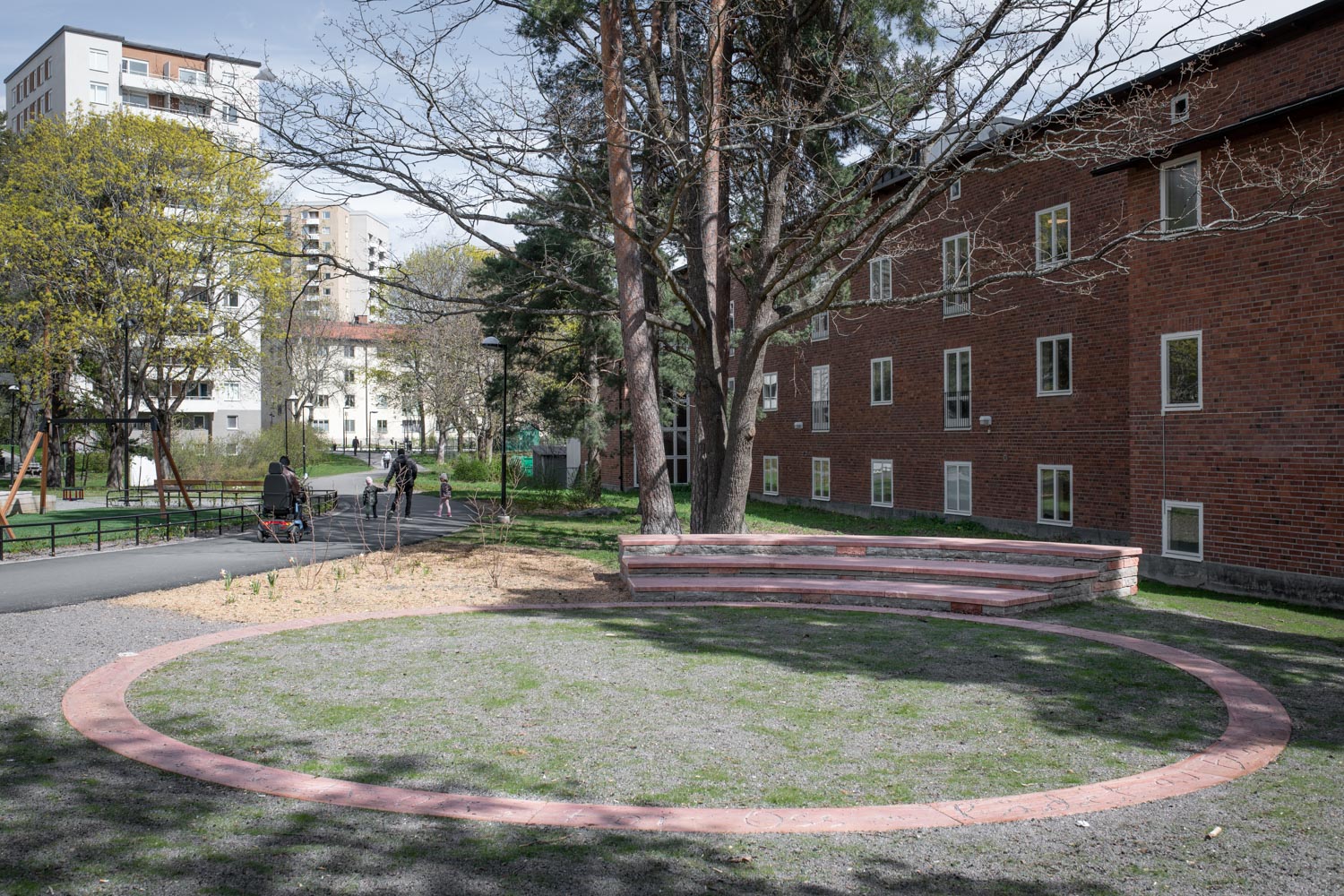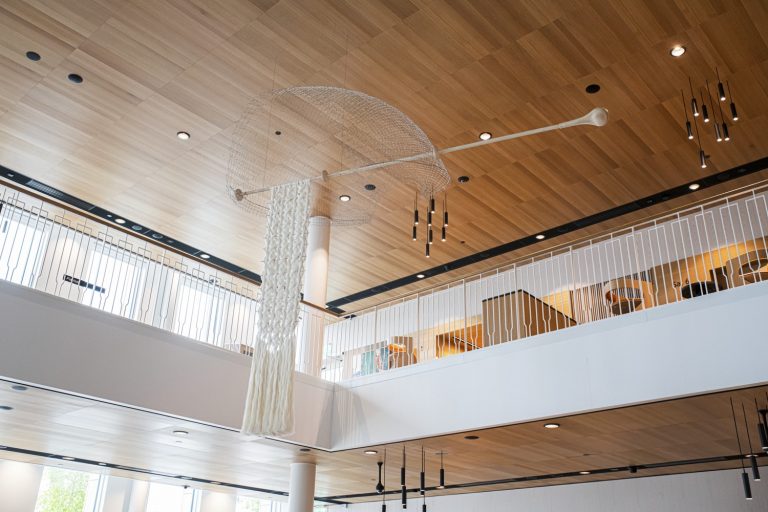A stage, a meeting place and a re-writing of history. With Şaneşîn, Nasim Aghili, Björn Karlsson and the Council of United Creoles have transformed Hässelby into a place that reflects the unmournable.
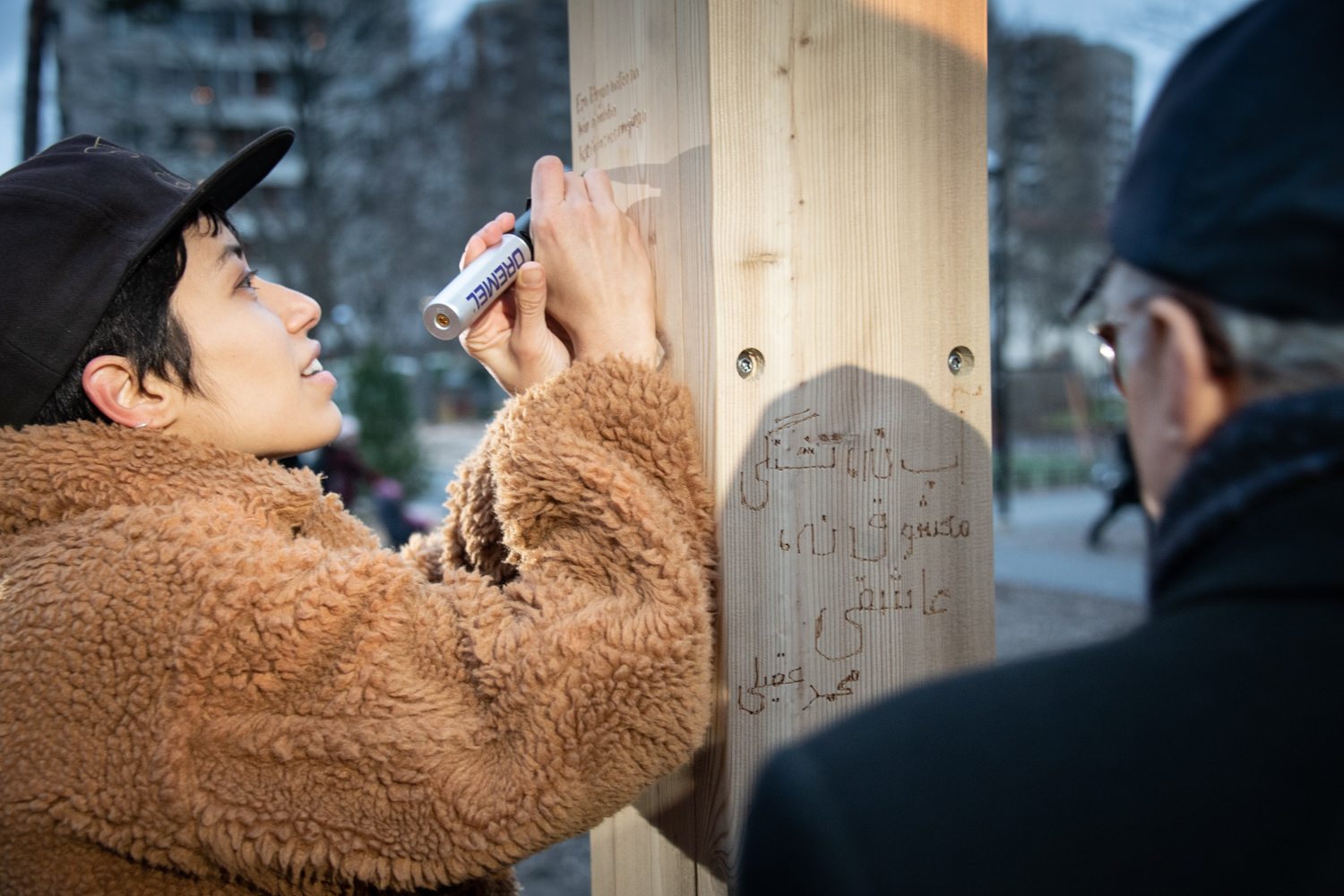

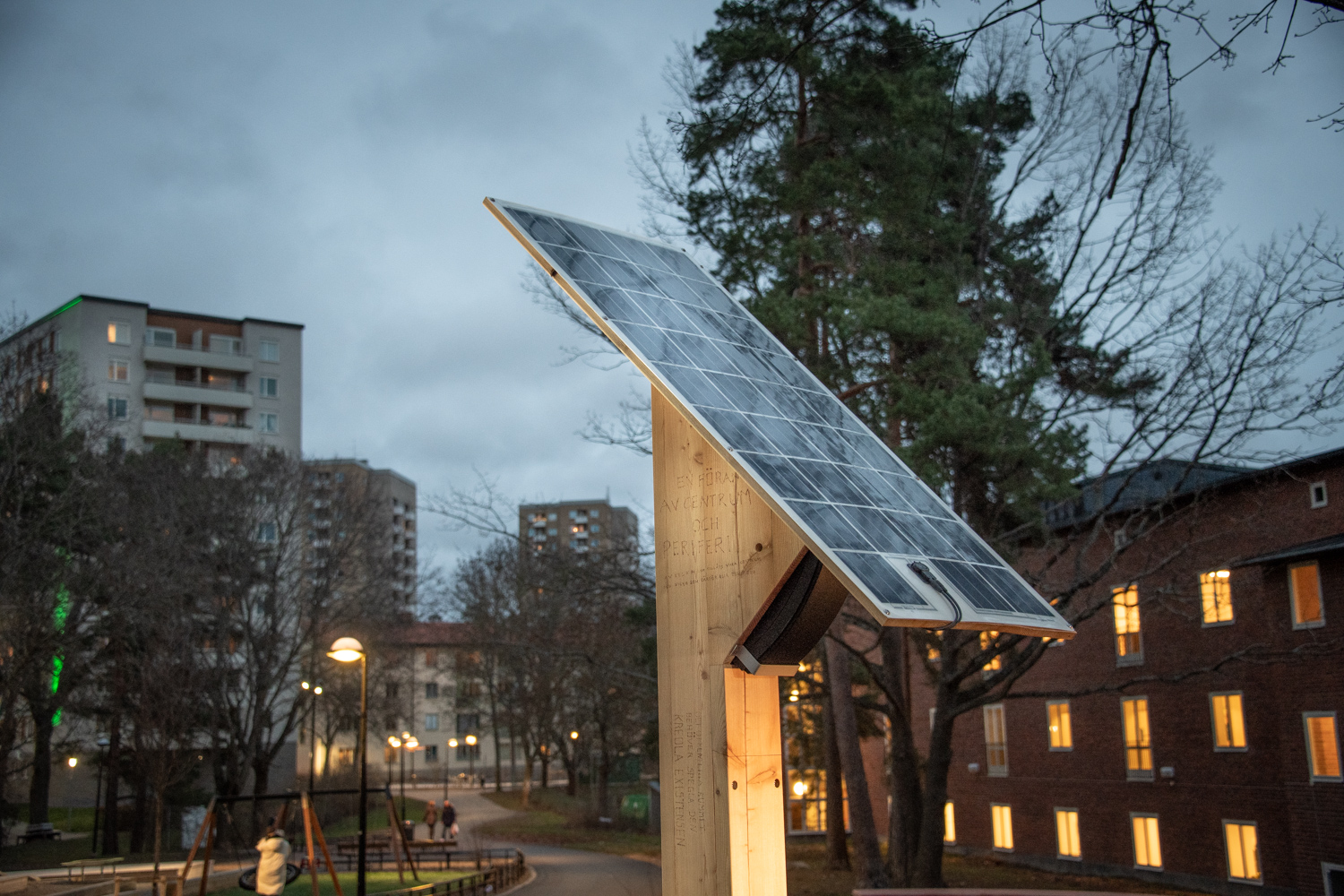
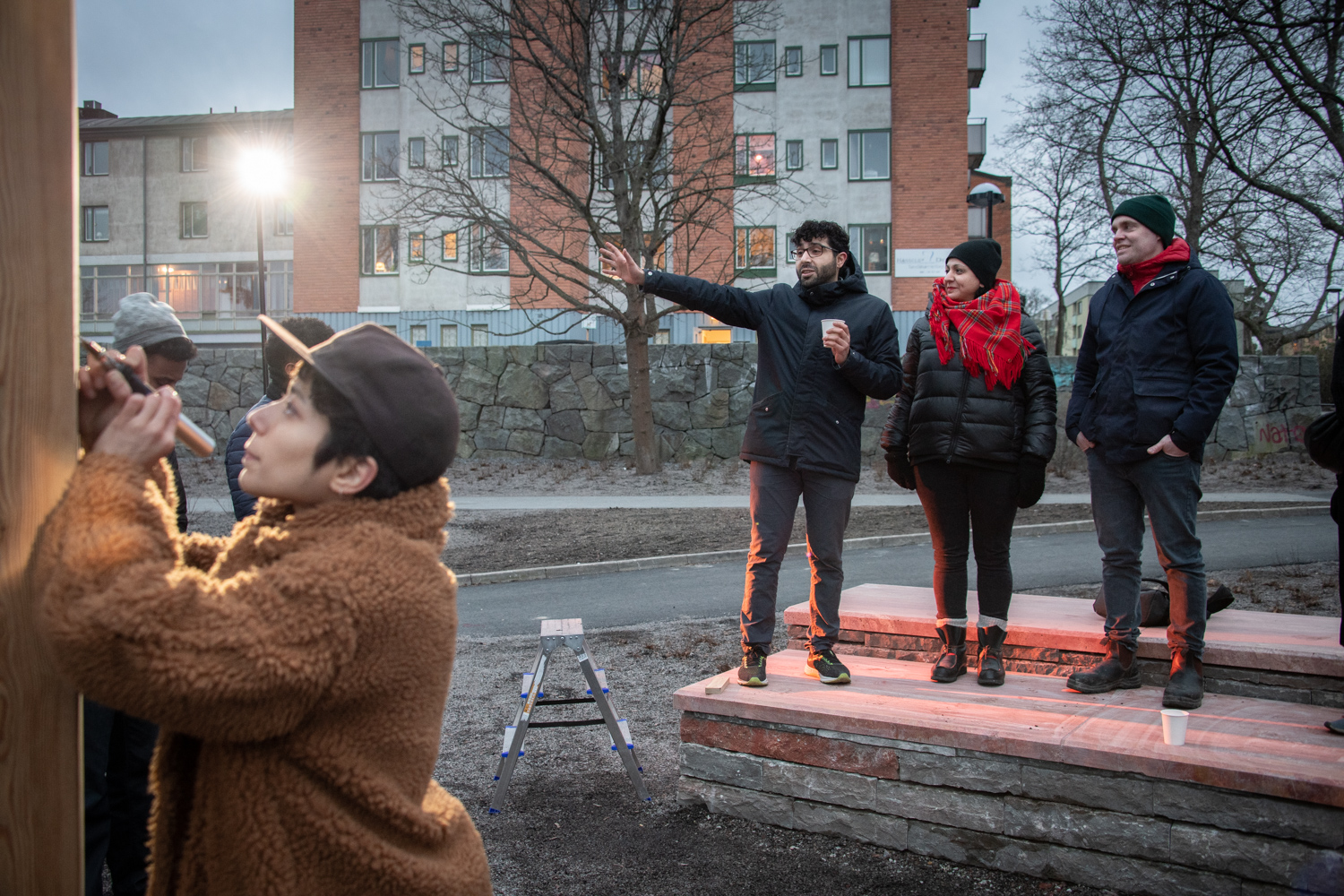




A society is a weave of innumerable stories but history is often written as only one. Not seeing and hearing the full story can mean mortal danger for people who are not seen and heard, as well as a major loss for the majority culture that owns the dominant narrative.
When artists Nasim Aghili and Björn Karlsson, in collaboration with the Council of United Creoles, initiated their work in Hässelby the central question was which bodies are permitted to make their mark in the urban space. Which experiences are allowed to be seen?
Often working performatively and exploratively, the duo has described their art as a quest for alternative reality practices that “create a logic that differs from the predominant neoliberal, individualistic, heterosexual and colonial one that we regard as natural and inevitable”.
The Stockholm suburbs Hässelby and Vällingby feature much public art that reflects an idea of a 1950s populated by a relatively homogenous working class. The amphitheatre Şaneşîn provides our contemporary age with a representation. Şaneşîn reflects the Creole experience, which encompasses migration, multilingualism and an anti-racist struggle.
The circle of stones, the brick-built benches, and the mulberry bushes evoke a majestic expression. Mounted on a text-clad pole supporting a solar cell, a loudspeaker emits the sound of Maya Angelou’s poem Still I Rise. Şaneşîn is a stage where mournability and resistance are displayed as everyday actions.
On Art is Happening and Hässelby
Art is Happening was a government initiative that ran for three years, 2016–2018, and produced public art with a focus on the Million Programme housing areas, as part of the framework of the government commission Taking Place. Public Art Agency Sweden’s brief was to produce examples of what public art can be, develop methods for citizen participation and disseminate knowledge on the result of the initiative.
Hässelby is located some 20 kilometres west of central Stockholm. The Council of United Creoles wants to create a new meeting place, an outdoor platform for culture, where they can relate their stories. They explore issues such as norm criticism and alienation.
Hässelby is part of the Hässelby-Vällingby district, comprising areas such as Hässelby strand, Hässelby gård and Hässelby villastad. Most of the multi-dwelling units in Hässelby gård were built in the mid 1950s. The underground station was completed in 1958.
The Council of United Creoles is a network that has emerged in recent years with the aim of overcoming colonial and racist thought patterns. They define Creole identity as a fusion of various traditional ethnic, religious and cultural identities.
On Aghili/Karlsson
Aghili/Karlsson (Nasim Aghili and Björn Karlsson) are an artist duo based in Stockholm whose work is in dialogue with experiences of living in various forms of exile and being exposed to authoritarian dehumanisation. Consequently, their works often assumed the form of healing rituals that stage and enable mournability. The duo has collaborated for 13 years, the last five of which primarily in collaborative projects that explore/practise radical gardening, civil disobedience and the aesthetic of sisterhood – often in collaboration with activists and collectives whose works are based in various forms of decolonising practices.
Find the artwork
Loviselundsskolan
